The hydrophones hosted by the Port Townsend Marine Science Center are located at the end of a pier in Fort Warden State Park that extends into Admiralty Inlet. Within a sheltered embayment between Points Wilson and Hudson, the site faces east and is great for listening to whales — especially orcas seeking salmon in Puget Sound. The hydrophones also pick up human-made noises, most commonly from commercial ships and the local ferry that connects Port Townsend with Whidbey Island.
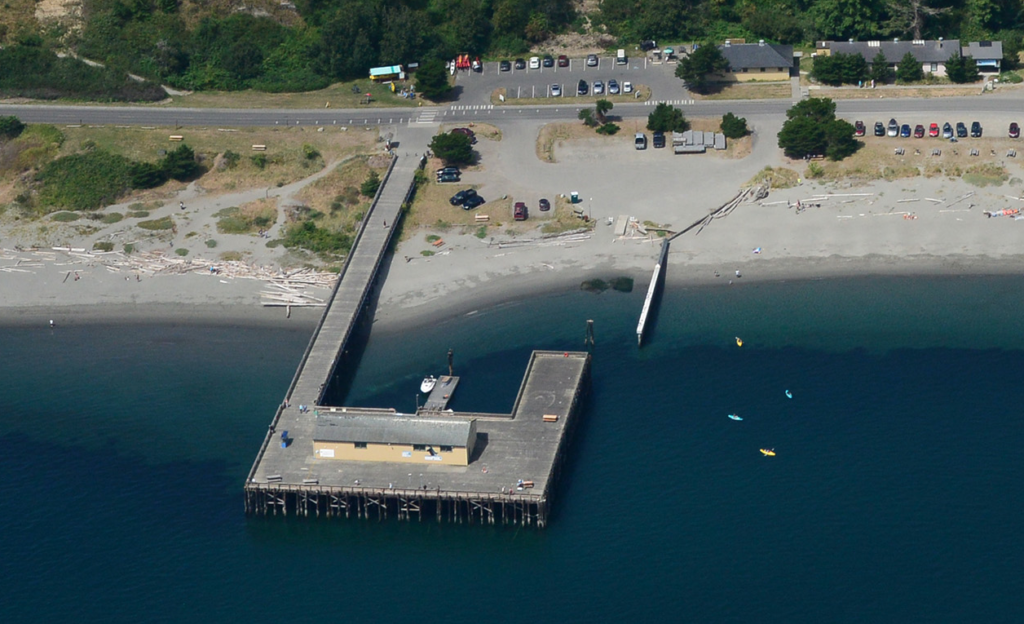
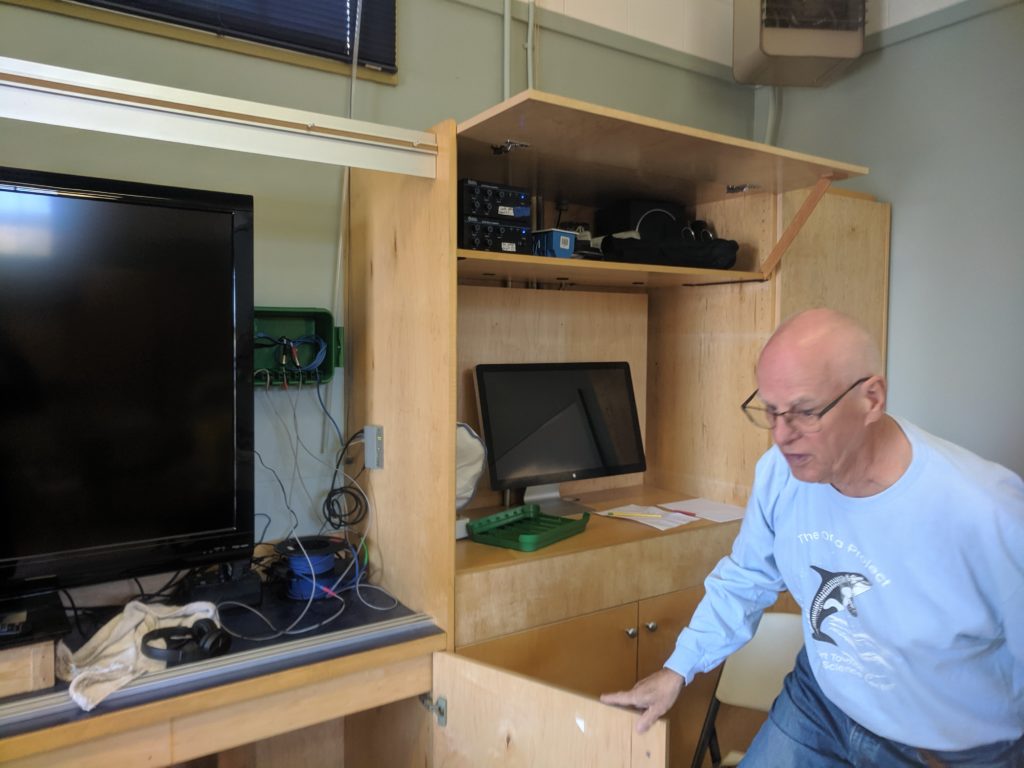
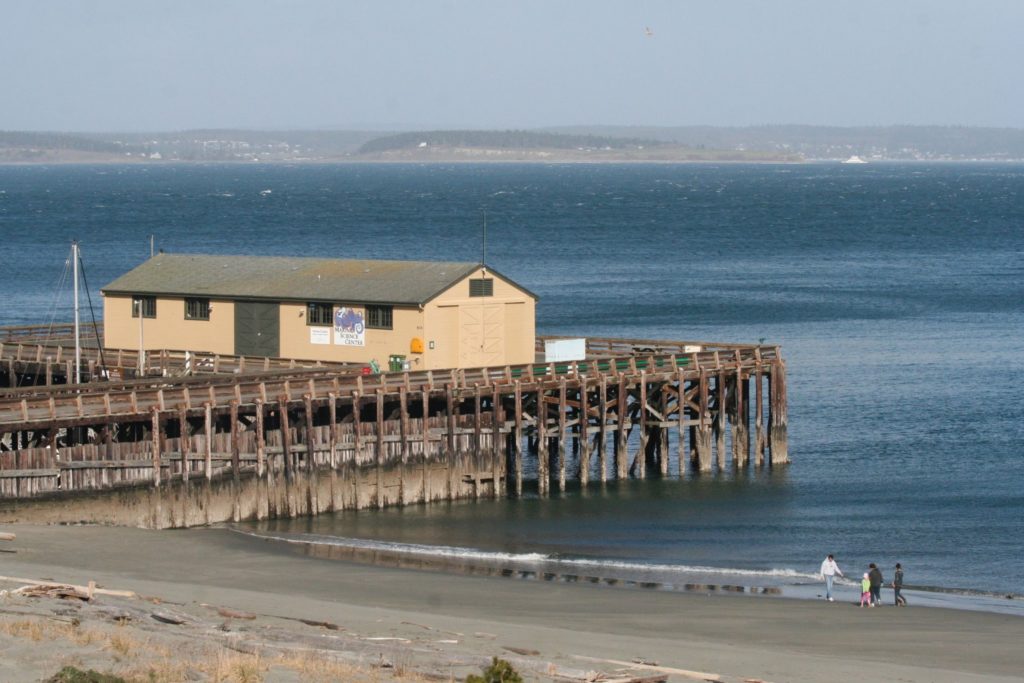
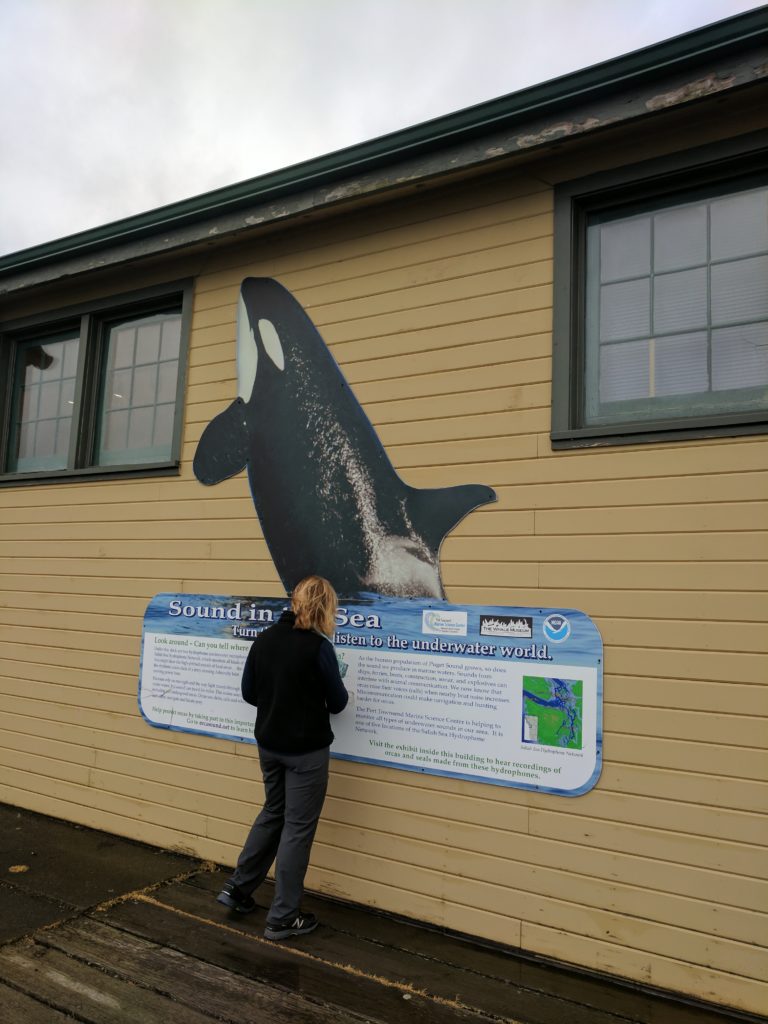
Latest news:
Overview and credits:
Since 2006, the Port Townsend Marine Science Center has not only hosted and maintained a hydrophone node, but also undertaken multiple projects as an educational node of the Orcasound network. These endeavors have been undertaken by a long list of talented team members.
Hydrophone infrastructure
The hydrophones were initially deployed by Eric McRae and Scott Veirs via a SCUBA dive through the pilings under the pier. The LabCore hydrophones, provided by Lon Brocklehurst, have only needed replacement a few times. Maintenance has been coordinated by PTMSC staff (Betsy Carlson, and earlier Chrissy McLean) and implemented largely by dedicated volunteers like, Eric and Darryl Hrenko. For many years, the site offered the highest-speed and most reliable Internet connection of all Orcasound nodes.
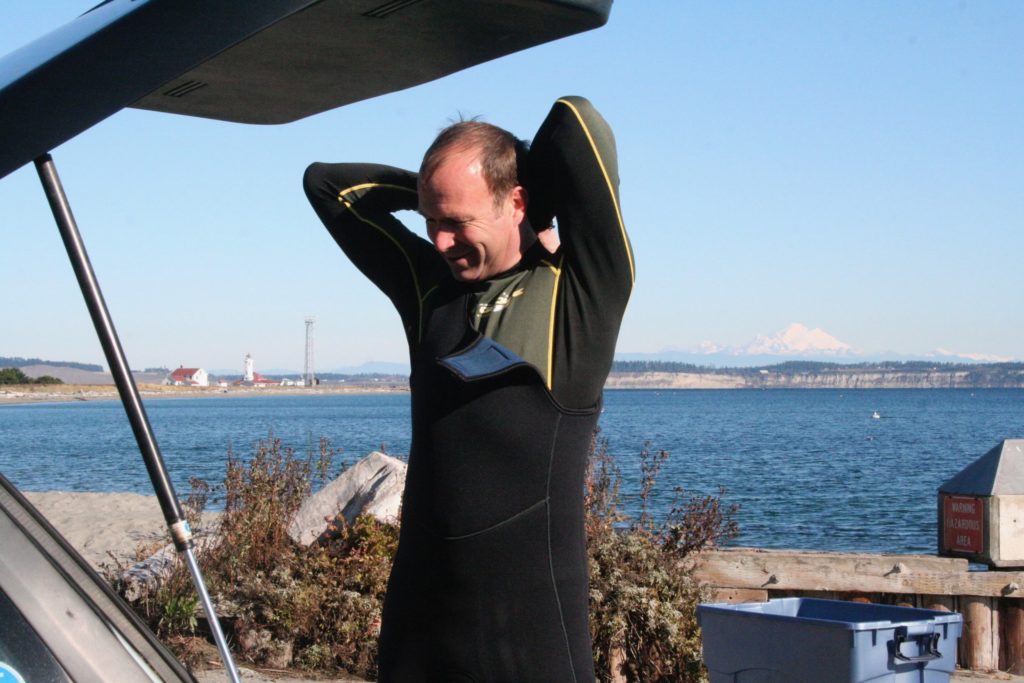
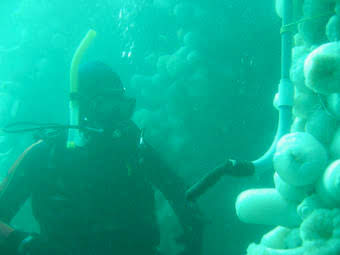
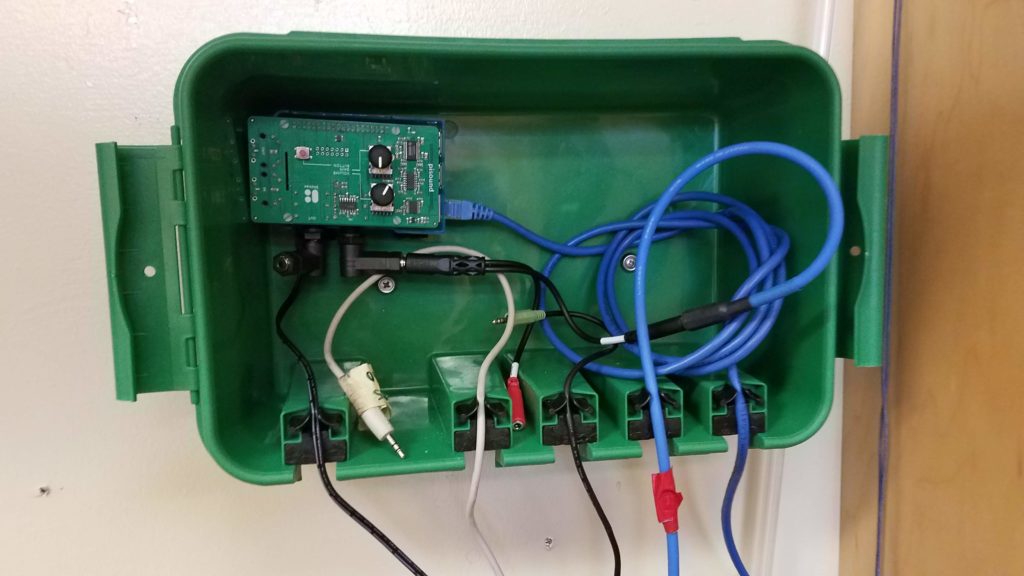
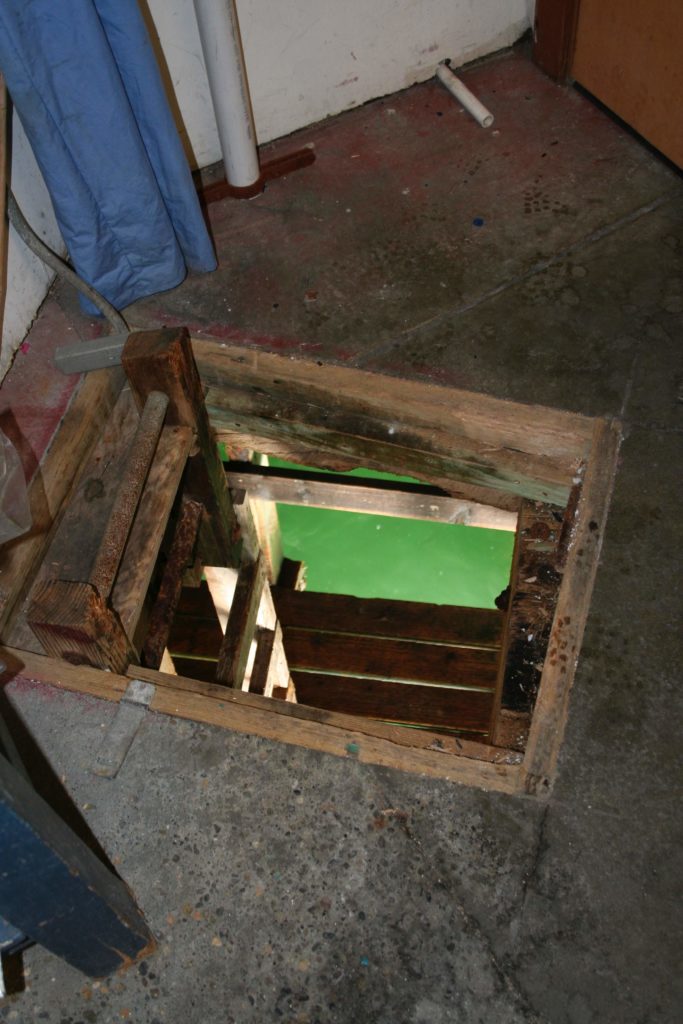
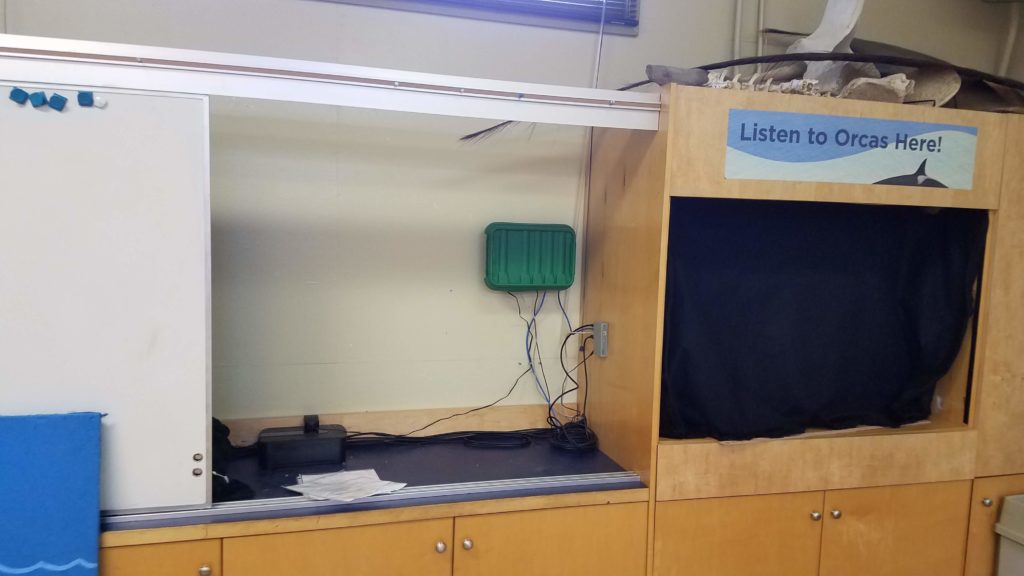
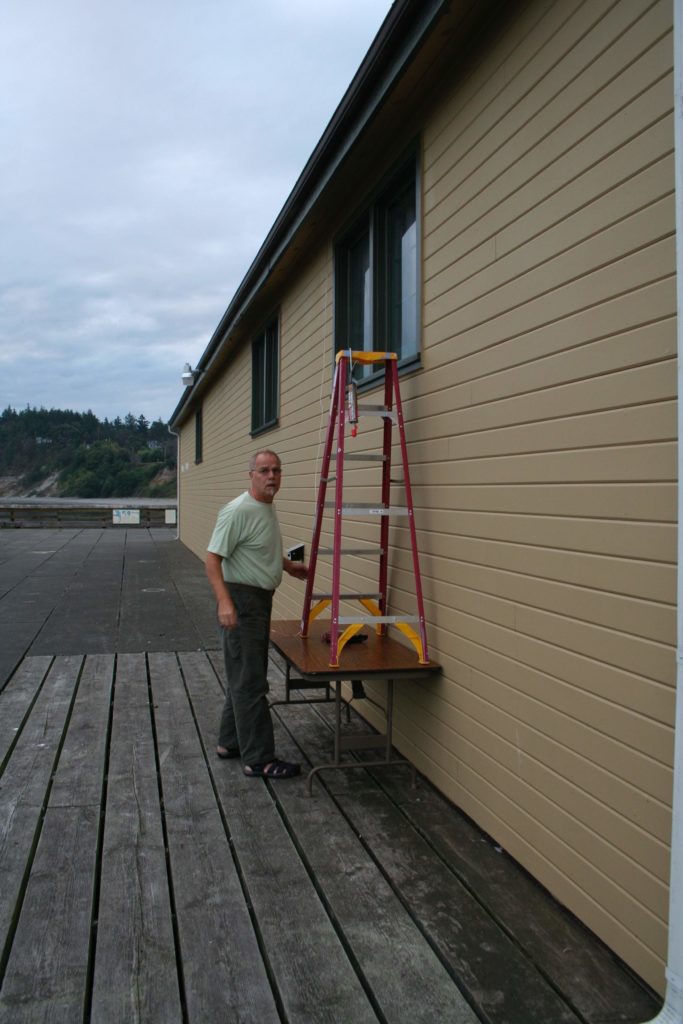
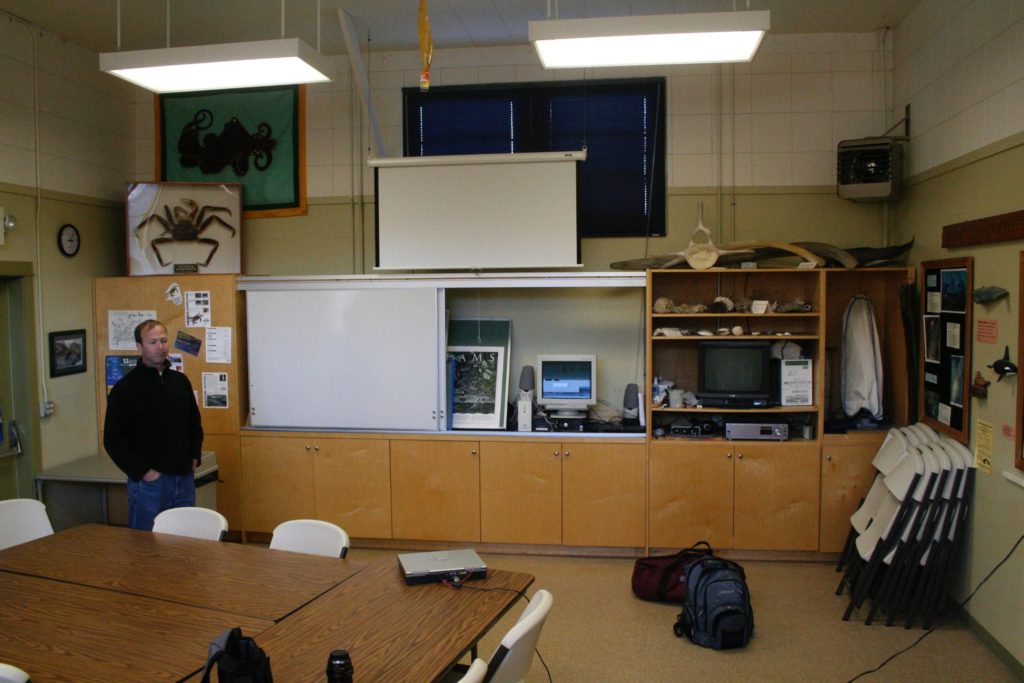
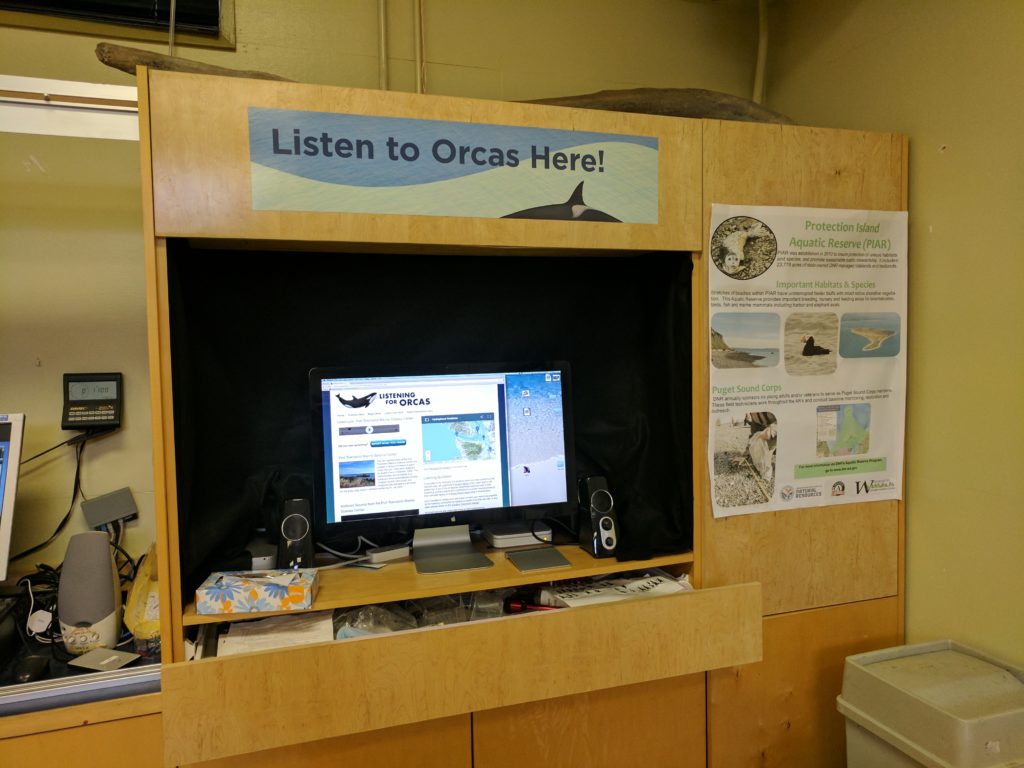
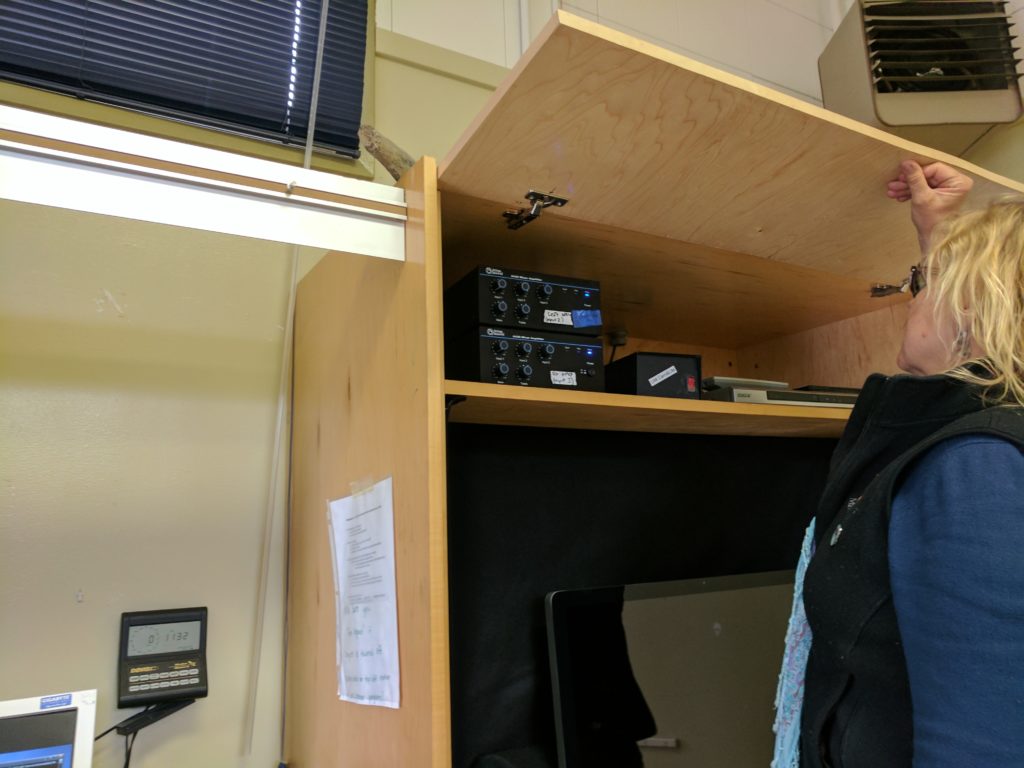
Educational resources
The Port Townsend Marine Science Center maintains exhibits on land, including one memorializing a Bigg’s killer whale known as Hope, and aquaria out on the pier (where the hydrophones are deployed from through the floor of the teaching classroom). The educational resources related to Orcasound and created by PTMSC staff, volunteers, collaborators include:
- An outdoor stereo speaker system with NOAA-funded signage and a timer-switch that allows a visitor at the end of the Fort Worden pier to experience binaural underwater listening while viewing the panoramic seascape, even after-hours. The system was installed in 2009 by Beam Reach (Val and Scott Veirs) and has been expertly maintained and improved by Daryll and Eric.
- A web site designed to teach secondary school and community college students to recognize not only orca calls, but also many of the ~25 types of calls made by the Southern Resident Killer Whales. The content was provided to visitors through a listening kiosk, as well as via links on the PTMSC web site to listen.orcasound.net . The project was funded through NOAA (Candice Emmons) and implemented through a partnership of PTMSC and Killer Whale Tales (Jeff Hogan), with technical support from Beam Reach (Scott Veirs).
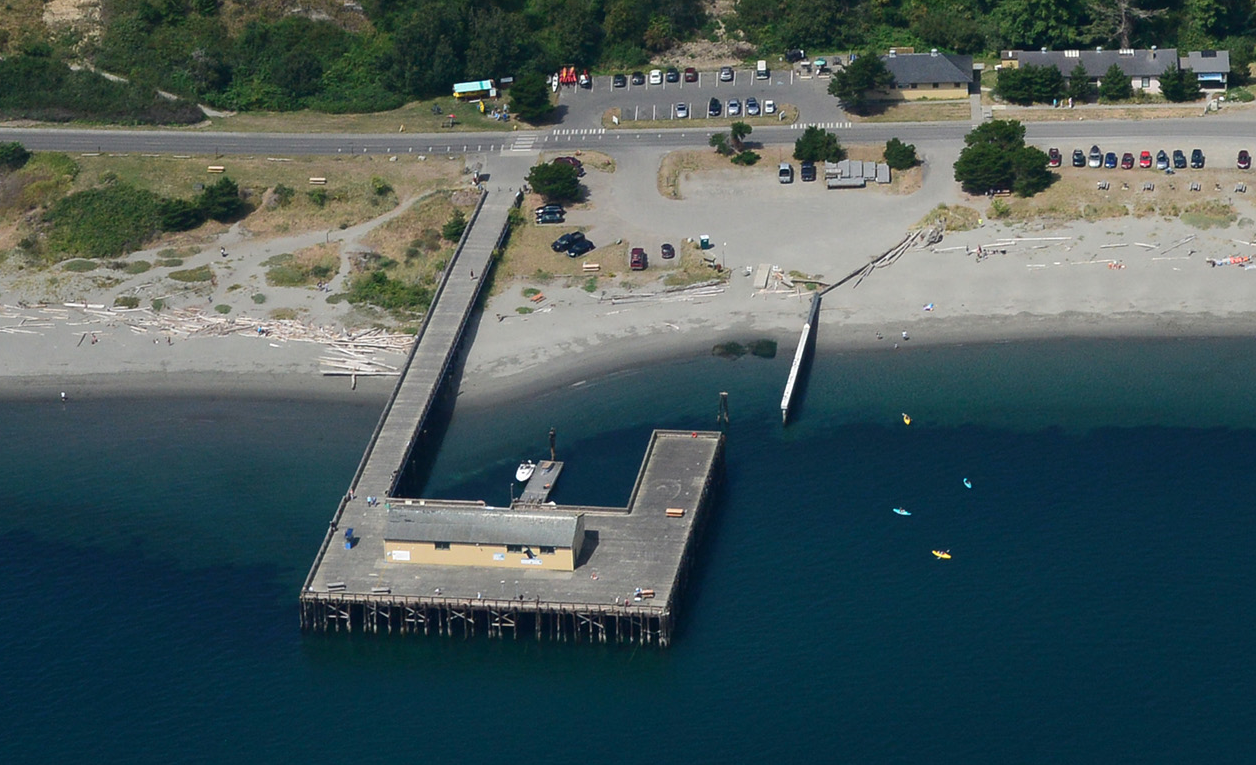
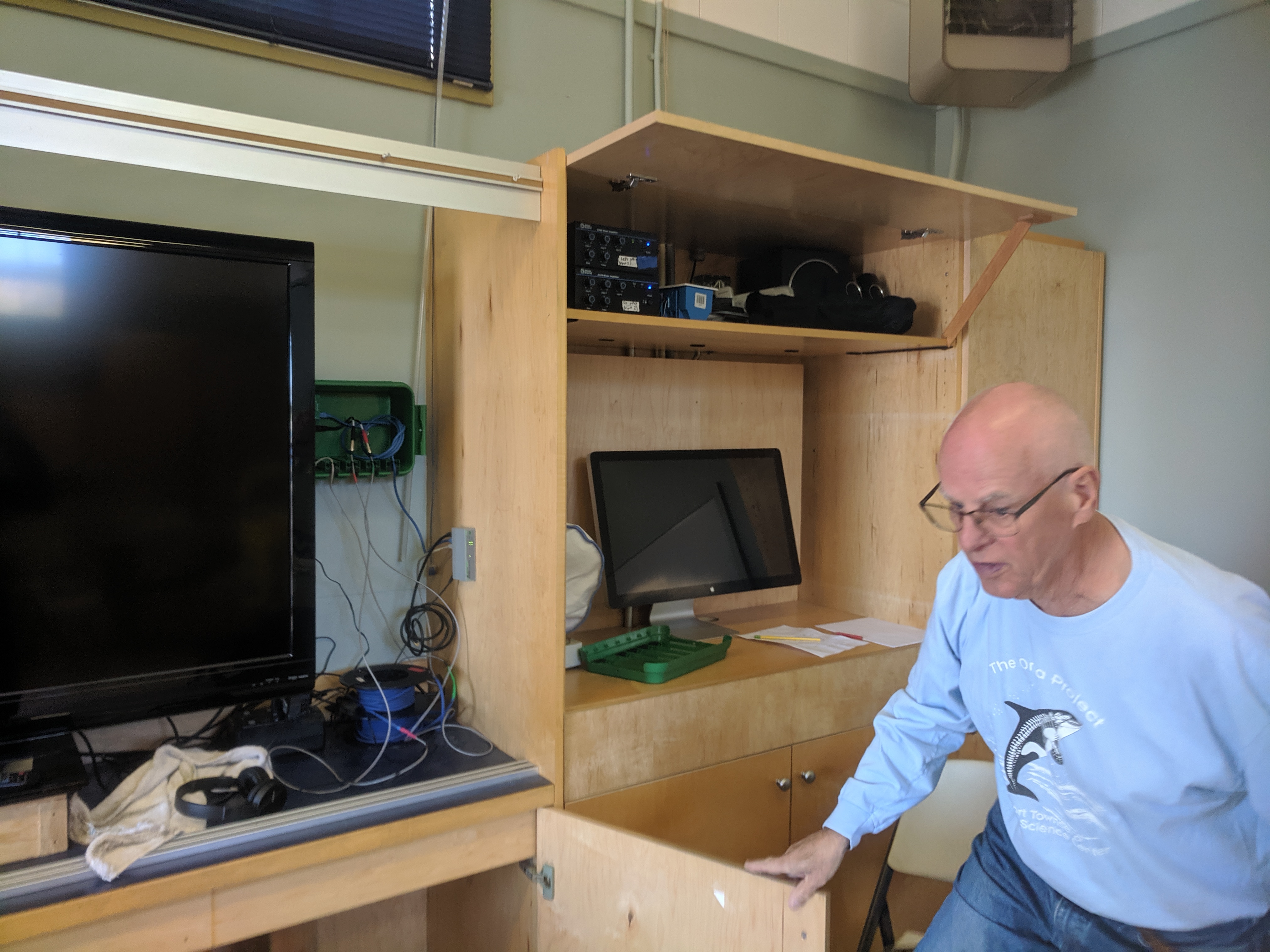
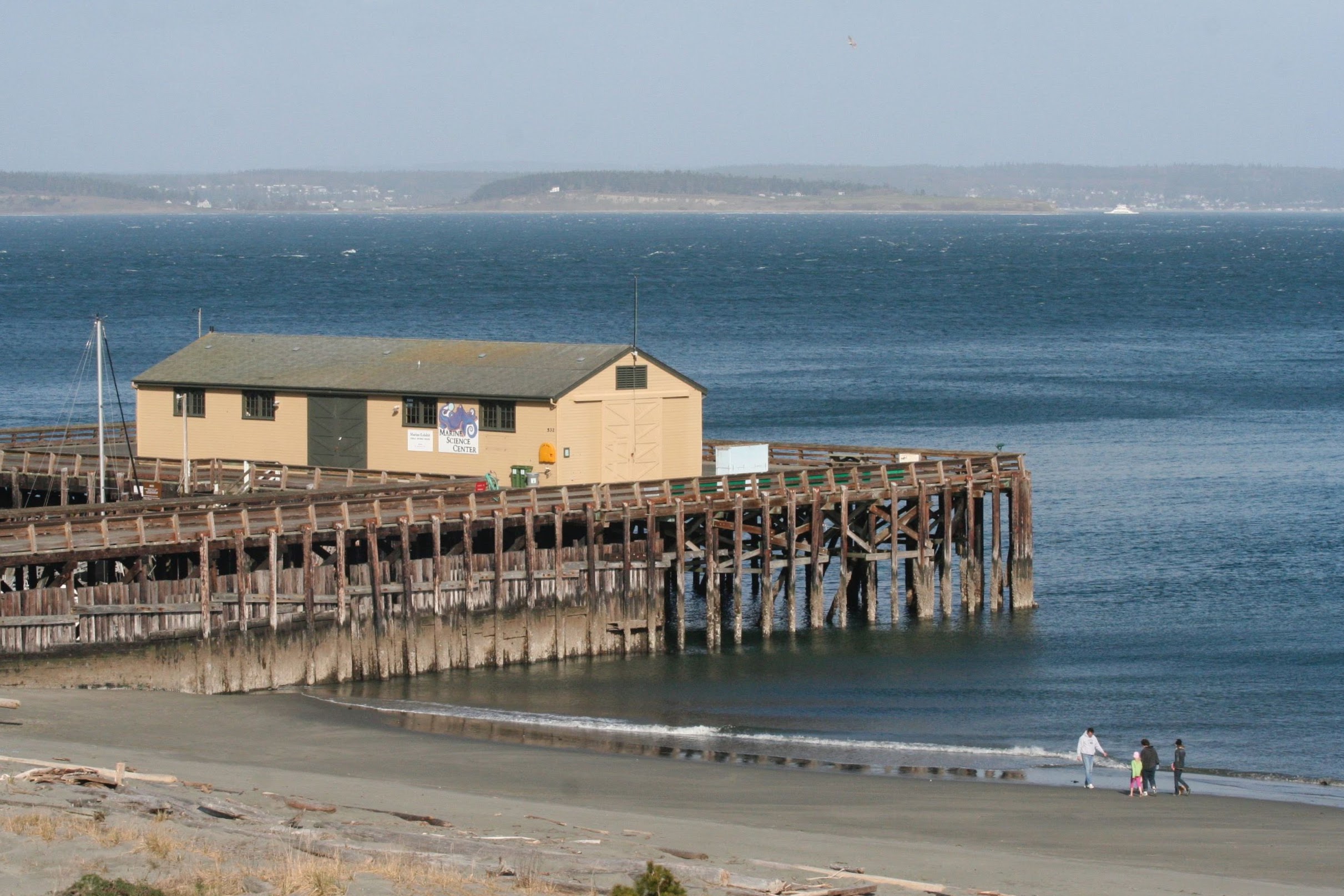
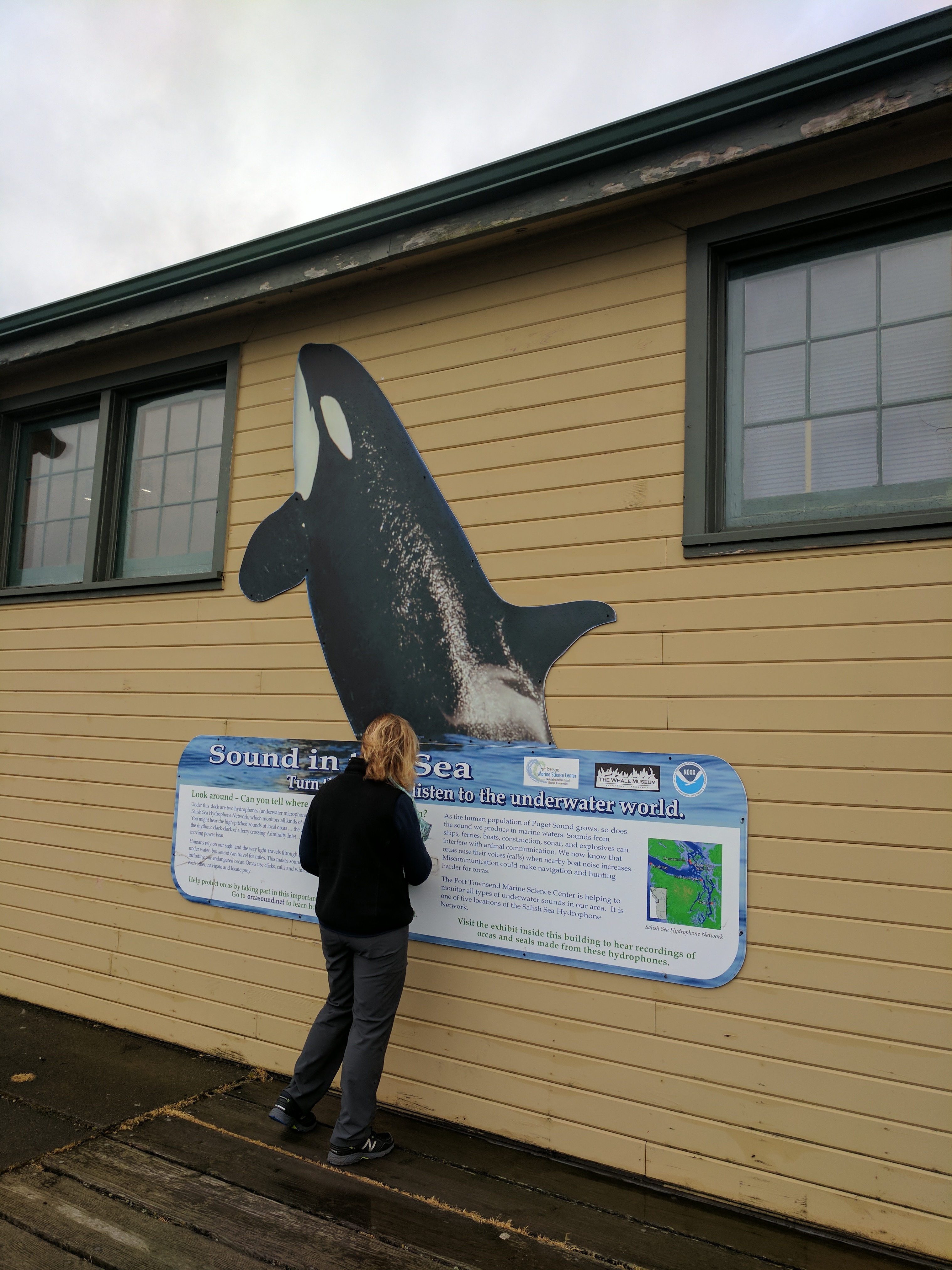
Hi, great work and it is so amazing to be able to listen to underwater sounds from another part of the world!
I was wondering how deep the hydrophone is and how far away from the coast?
Kind regards, -Pierre.
Ps: I was listening to the other sites and was wondering if you had the same information for each of them?
Hi Pierre,
The hydrophones at Port Townsend are at a depth of about 7 meters under the outer part of the wharf about 100m offshore from Fort Worden State Park’s sandy beach. We try to update metadata whenever we re/deploy hydrophones at each location, so for the most current information, please look for deployment depths in the information for each site in version 3 of our live-listening web app — https://live.orcasound.net/listen/port-townsend